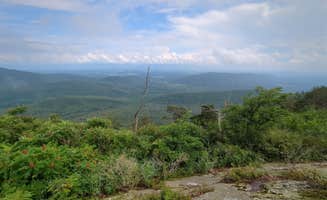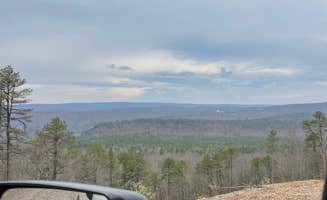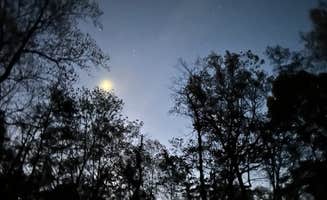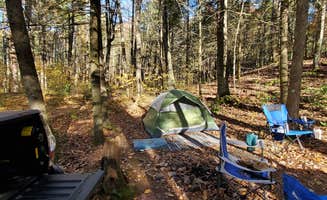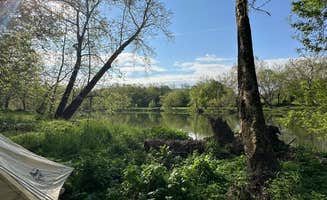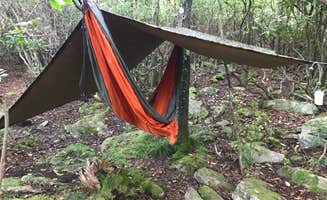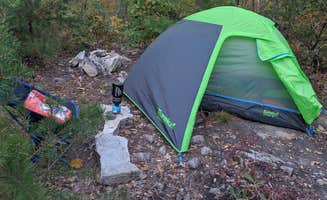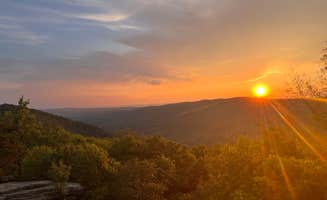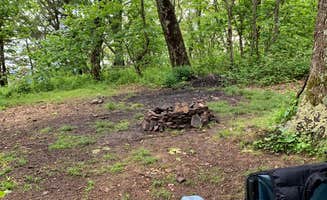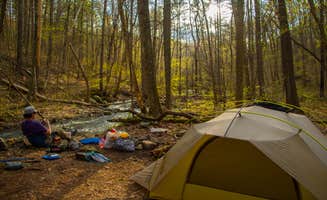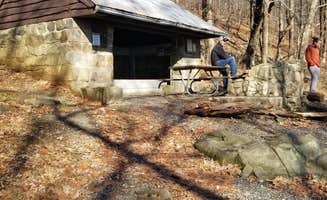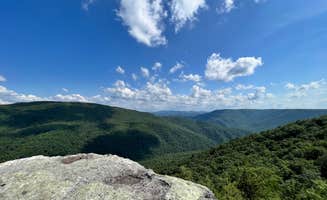Dispersed camping sites near Mathias, West Virginia cluster along forest service roads in the George Washington and Monongahela National Forests. Elevations range from 900 to over 4,000 feet, creating diverse ecosystems from creek bottoms to high mountain plateaus. Most camping areas feature established fire rings from previous campers and relatively flat tent areas, with camping allowed for up to 14 consecutive days.
What to do
Hiking nearby trails: Wolf Gap Recreation Area provides access to several hiking trails including the North Mountain Trail. According to Kevin C., "There are several trails that intersect with the campsite and day hikers are a common site."
Creek exploration: At Squirrel Gap Rd Dispersed, campers can access streams and small waterfalls. Dexter V. notes, "Quite a few miles down Squirrel Gap Rd. There is another sunnier sight a little before this one. But this one is right off the road, entrance is steep."
River activities: South Fork Shenandoah River offers water-based recreation. One camper reports, "Our site was amazing! The very last car camping site on the road. We were right on the river, we swam and fished. There were plenty of walk in sites beyond ours."
Seasonal photography: Fall colors peak in mid-October in the region, creating photogenic landscapes along ridges and forest roads. The high elevations offer panoramic views of the surrounding valleys and mountains.
Wildlife observation: Multiple camping areas provide opportunities to spot native wildlife. One visitor to Dolly Sods Backcountry observed, "The amount of brightly colored fungi, snakes, crayfish and salamanders were astonishing. So if you move too quickly, you miss them."
What campers like
Natural solitude: Campers appreciate the quiet, undeveloped nature of dispersed sites. At Squirrel Hollow Road Camping, Jon D. found "Large campsites and relatively quite. We took two vehicles and found several suitable sites. Traffic was light with one pickup overnight and a small convoy of motorcycles the next morning."
Free camping options: Several areas offer free camping near Mathias, West Virginia without permits or fees. Kevin C. notes, "Sites are located less than a mile from the paved highway. We found 5 spots just off the road. All were easily accessible by cat or with a small teardrop trailer."
Established sites: Some dispersed areas feature basic amenities. At Wolf Gap Recreation Area, one reviewer observed, "Most sites have a paved parking platform and then a second tier for the camp site. All sites are quite large and include picnic tables, fire rings and large tent platforms."
Water access: Proximity to creeks or rivers is a common highlight. Sumner C. describes South Fork Shenandoah River: "The road to get to the campsite was well maintained and easy to get to. Campsites themselves were a tad overgrown but it was the beginning of the season."
Dark skies: The remote nature of many sites provides excellent stargazing opportunities. One camper described their experience as "quiet and dark and a bit buggy," noting that "the tent pads appear to be" level despite uneven car parking areas.
What you should know
Road conditions vary widely: Forest roads range from well-maintained gravel to rough tracks requiring high clearance. A visitor to Crisman Hollow Road Camp mentioned, "Some roads were closed. Some spots were full of trash."
Cell service limitations: Most areas have poor or nonexistent cell coverage. A reviewer at Little Fort Campground noted, "On this app it says T-Mobile access, I'm a T-Mobile customer, no reception at all but drive 5 minutes back down the mountain and you're good to go."
Site availability fluctuates: Weekends and holidays can fill popular areas quickly. At Little Fort, one camper reported, "Got the last site at 6PM on the Friday of Memorial Day weekend. Very respectful neighbors so it was very quiet."
Weather preparedness: Mountain weather changes rapidly, especially at higher elevations. Temperature differences of 10-15 degrees between valley and ridge sites are common.
Trash management: Pack out what you bring in. A camper at South Fork Shenandoah River observed, "Unfortunately there was a decent bit of trash we cleaned up."
Tips for camping with families
Site selection priorities: Choose sites with established fire rings and level tent pads. At Little Fort Campground, Sawyer B. found, "Site had a fire pit, table, parking spot, and tent platform. We used one of the sign in slips but many of the other campers did not."
Water sources: Most dispersed sites lack potable water. Filter or bring water from town. Streams may run seasonally.
Noise considerations: Some areas experience unexpected noise from other users. One reviewer at South Fork Shenandoah River warned, "The real issue was the land directly across the river that had 20+ people playing loud music at almost all hours."
Wildlife precautions: Bears are active throughout the region. Store food properly. One camper at Switzer Lake mentioned, "There are bears here, so lock up your food in the car. We have encountered a bear at or around the campsite 3 times."
Educational opportunities: Many camping areas offer unique ecosystems. A visitor to Dolly Sods Backcountry described it as offering "a completely different and unique ecosystem than the surrounding area" where "the ferns and evergreens reminded me of being in Maine, the vast meadows felt like I was in Wyoming or Montana."
Tips for RVers
Vehicle accessibility: Most dispersed sites require careful navigation for anything larger than a small trailer. Kevin C. observed at Squirrel Hollow Road: "Sites are located less than a mile from the paved highway. All were easily accessible by cat or with a small teardrop trailer."
Size restrictions: Large RVs will find few suitable options in most dispersed areas. Small travel trailers or truck campers work best. "The road was a little rough, but our 92 ford camper made it, just go slow," reported a camper at South Fork Shenandoah River.
Leveling requirements: Parking areas are rarely level. VanRumschpringa noted at Wolf Gap Recreation Area that "Many of the car parking pads are not level."
Weather considerations: Check road conditions after rain. Some areas become impassable for RVs during wet weather or winter months.


